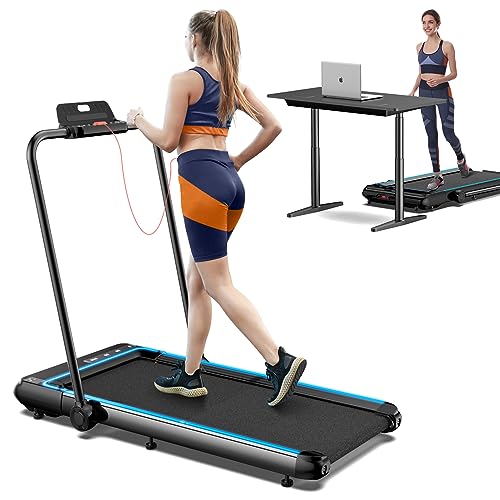This company has no active jobs
0 Review
Rate This Company ( No reviews yet )
About Us
What’s The Job Market For Tread Mill Professionals Like?
Treadmills: A Comprehensive Guide to Understanding Their Functionality, Benefits, and Appropriate Selection
Introduction
Treadmills have actually ended up being a staple in modern fitness routines, both in homes and gyms worldwide. They use a practical and effective method to maintain cardiovascular health, increase endurance, and help in weight management. This short article checks out the various kinds of treadmills, their advantages, functions to consider when acquiring, and some FAQs to assist users in making informed decisions.
Types of Treadmills
When it concerns picking a treadmill, it is important to comprehend the different types offered in the market. Here are the main classifications:
1. Handbook Treadmills
- Mechanism: These treadmills have a simple design and count on the user’s efforts to move the belt.
- Pros: More cost effective, quieter operation, no electrical energy required.
- Cons: Limited features, might not offer the very same variety of workout intensity.
2. Motorized Treadmills
- Mechanism: Powered by a motor that drives the belt, enabling users to stroll or run at a set speed.
- Pros: Greater variety of speeds and Tread Mill inclines, geared up with various functions such as heart rate monitors and workout programs.
- Cons: More costly and may require more upkeep.
3. Folding Treadmills
- System: Designed for those with limited area, these treadmills can be folded for simple storage.
- Pros: Space-saving, often motorized, versatile functions.
- Cons: May be less resilient than non-folding models.
4. Business Treadmills
- Mechanism: High-quality machines developed for use in fitness centers and fitness centers.
- Pros: Built to hold up against heavy use, advanced features, frequently include warranties.
- Cons: Pricey and not perfect for home usage due to size.
5. Curved Treadmills
- System: A special design that allows users to propel the belt using their own energy.
- Pros: Offers a more natural running experience, promotes much better running kind.
- Cons: More pricey and can be noisier.
| Treadmill Type | Pros | Cons |
|---|---|---|
| Manual | Affordable, no electricity needed | Minimal functions |
| Motorized | Range of speeds, advanced features | Upkeep required |
| Folding | Space-saving, typically motorized | May do not have toughness |
| Commercial | Constructed to last, professional-grade features | Costly |
| Curved | Natural running experience, promotes great form | Higher price |
Benefits of Using Treadmills
Treadmills provide various advantages that can contribute to one’s total fitness and health goals. Some of these advantages consist of:
- Convenient Workouts: Treadmills enable users to exercise inside your home despite climate condition.
- Cardiovascular Health: Regular usage can enhance heart health by increasing stamina and promoting healthy flow.
- Weight Management: Effective for burning calories, which helps in weight loss and management.
- Personalized Workouts: Users can control speed, slope, and duration to produce personalized workout experiences.
- Safety: Treadmills provide a foreseeable surface area, reducing the danger of falls compared to outdoor running.
- Multifunctional: Many treadmills included features like heart rate screens, exercise programs, and even home entertainment systems.
Picking the Right Treadmill
When picking a treadmill, possible purchasers should think about a number of essential elements:
Features to Consider:
- Motor Power: Typically determined in horse power (HP), a motor strength of at least 2.5 HP is advised for major runners.
- Belt Size: A longer and wider belt accommodates different stride lengths, supplying comfort throughout exercises.
- Incline Settings: Adjustable slope features mimic outdoor hill running and can increase workout intensity.
- Weight Capacity: Ensure the treadmill can support the user’s weight for security and durability.
- Console Features: Look for user-friendly dashboards, workout programs, and Bluetooth compatibility for streaming music or other functions.
Budget Considerations
- Under ₤ 500: Entry-level manual treadmills ideal for casual walkers.
- ₤ 500 – ₤ 1,500: Mid-range motorized treadmills that provide more functions and much better durability.
- ₤ 1,500 – ₤ 3,000: High-end models with advanced technology, larger motors, and longer service warranties.
- Over ₤ 3,000: Commercial-grade treadmills perfect for regular use in fitness centers or training facilities.
Regularly Asked Questions (FAQs)
1. How typically should I utilize a treadmill?
It is advised to use a treadmill a minimum of 3 to 5 times a week, including various intensity levels for best results.
2. Can I drop weight by using a treadmill?
Yes, consistent use of a treadmill can contribute to weight-loss, particularly when combined with a well balanced diet and strength training.
3. What is the best speed to walk on a treadmill for newbies?
A speed of 3 to 4 miles per hour is a suitable range for novices. It’s necessary to start slow and slowly increase rate as comfort and endurance enhance.
4. Do I require to use a treadmill if I already run outdoors?
Utilizing a treadmill can provide fringe benefits, such as regulated environments and varied workouts (incline, intervals) that are not always possible outdoors.
5. How do I maintain my treadmill?
Regular maintenance includes lubricating the belt, cleaning up the deck and console, and checking the motor for optimal performance.
Treadmills are vital tools for those looking to boost their fitness levels in a controlled and convenient way. With numerous types offered, understanding their functions and benefits is essential for making an informed purchase. By thinking about personal workout requirements, area schedule, and budget restraints, people can discover the most appropriate treadmill that fits their way of life. Incorporating treadmill exercises into a balanced physical fitness regimen can cause improved health results and a satisfying exercise experience.


